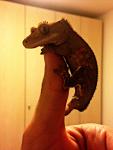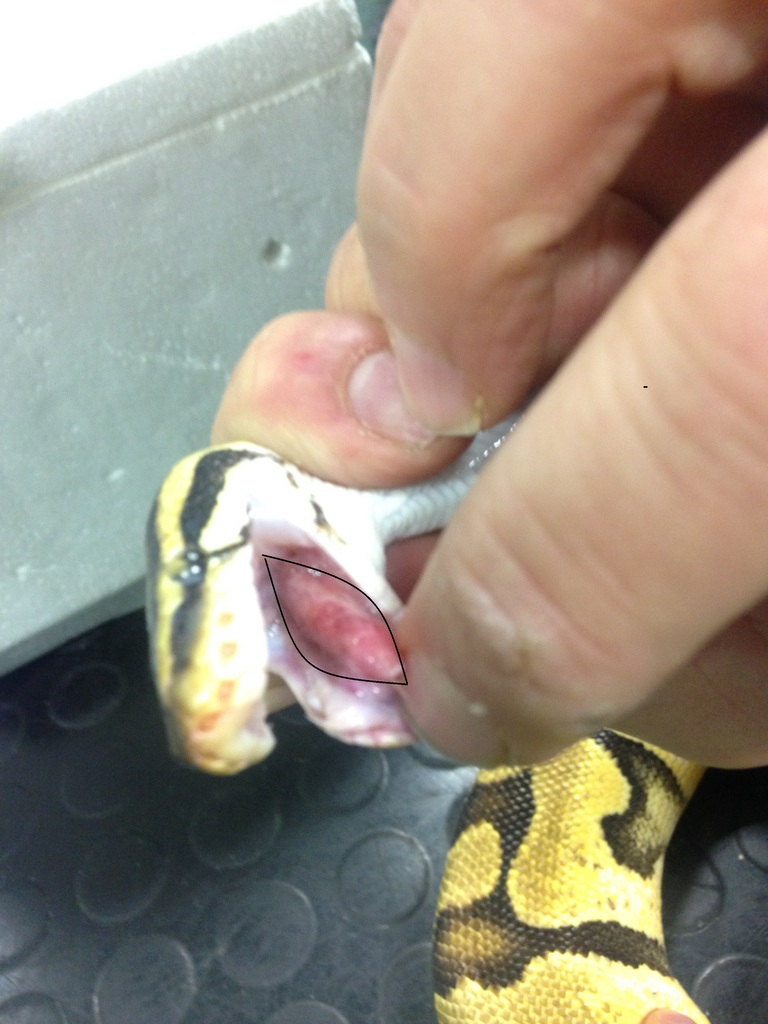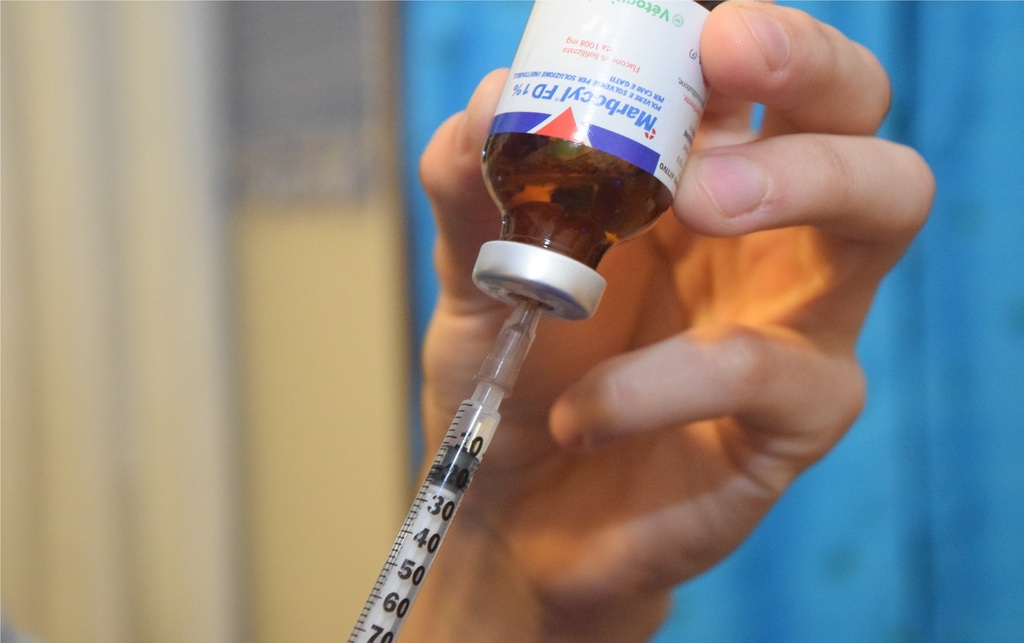» Site Navigation

0 members and 3,250 guests
No Members online
Most users ever online was 6,337, 01-24-2020 at 04:30 AM.
» Today's Birthdays

» Stats

Members: 75,095
Threads: 248,538
Posts: 2,568,726
Top Poster: JLC (31,651)
Welcome to our newest member, Daisyg
|
-
Registered User


Mouth rot, problem and cure
Hello everyone, this is my first thread regarding mouth rot and I hope I can help by sharing with you my personal experience and some pictures that I've been taking.
So, I bought 3 ball pythons 2 months ago from a person who was not taking proper care of them, as soon as I got them I saw already that they weren't fed correctly, did not shed entirely, one of them had scars from a mouse attack, and two of them, which will be the stars of this thread, had respiratory problems.
When I got home I cleaned the snakes, soaked them in water, offered food and put them in their own places. The two who had respiratory problems (female enchi-pastel and male pastel-pinstripe) were the center of my attention at the begining, so I monitored them to sea that they were doing fine and the situation didn't turn up to be worse than what I thought it was already. Sure enough, I saw 5 days later that saliva was coming out of the mouth of the female. I grabbed her and examined closely, and to my surprise I also saw pus, so I cleaned her gently and soon after I was done she opened wide her mouth and what I saw in the inside made me literally put my hands to my head: solid pus surrounding the glottis and part of the tongue sheath, mouth rot.
So for those who don't know what mouth rot (stomatitis) is, what it is is an infection that attacks the mouth in the internal and/or external part, causing it to swell, infect, create more saliva and mucus (which help in a bad way), forms solid pus around the snakes esophagus and can lead to other problems. My female had started to have a swollen head.
I knew I had to do something, so I called the vet and I took all 3 snakes for a main check and a closer inspection of the problem.
He opened the mouth to inspect the snakes, and he took a saliva sample witch contains mucus and pus aswell, so he could send it to the laboratory where they would do a check on the type of bacteria that where responsible and if there where a possible threat of fungal infection.
In the meantime he prescribed me an antibiotic that I could use in the week that I had to wait until the lab results came back.

The antibiotic is Marbocyl (it is Italian, I'm sorry if I don't know any other), which is subministered sub cutaneous according to the weight of each ball python. It is a powder containing the antibiotics which is then dissolved with a solvent. 0.1 mg for my 400 gr male and 0.3 mg for my 1.200 gr female.

I put the syringe next to a hair so you can see how small it is. Of course each time I have to vaccine the snakes I use a new one and NEVER the same one twice or for both snakes. The point might be dull, oxidized or it may even bend.

I apply it more or less 1/3 of the body length starting from the top. My snakes are quite calm, but I get someone that can hold them still just in case.

Always wash your hands and use some alcohol on the area where you are going to do the vaccine. The scales are rougher that what I thought they where, the syringe can't go through them (and shouldn't), so I do it under the bigger scales on the sides and almost under where there is also more fat and muscle.

After the injection, I was told by the vet to slightly press and rub where the liquid went in due to the fact that they absorb really badly through their skin any liquid.
After a couple of hours you will see a slight pink where you have made your injections.
It is my second week of treatment and I got the results from the lab:
-The infection is not pathogenic (capable of producing a disease) in general, but it is in reptiles.
-Both have the same bacteria and luckily none have a fungus growth.
-The bacteria is sensible to the antibiotics that I've been injecting (some are not sensible so that's why tests MUST be made so you don't apply antibiotics that don't help)
-Treatment for the male will go on for 10 days.
-Treatment for the female will go on for 20 days.
Further notes:
-This is my personal case, and this does not apply to all snakes nor to all ball pythons, so If you have this kind of problem, you should visit your vet. This is an insight of what the procedure of curing mouth rot for me was and I wanted to share with you a little bit of "na-lidge" 
-My snakes health come as number one to my priorities, and I hope many of you won't find yourself in this situation.
-If your wondering what all of this cost me please keep in mind there are a lot of variables (I live in europe, vets have different prices, pharmaceuticals may vary) But all in all it has cost me around 160 euros for the lab research and results, 40 for the visits, 20 for the antibiotic and 12 euros for the syringes (44 in total). With a total amount of 230 euros (246 DOLLARS) (195 GREAT BRITISH POUND).
-I still have to finish the treatment and I still have to go to do a check-up.
-If I have the chance (and luck) I will take a picture of the interior of my females mouth.
Thank you for your time and interest!

-
The Following 3 Users Say Thank You to Eru_Iluvatar For This Useful Post:
Albert Clark (12-09-2016),D_ONE (12-10-2016),Sonny1318 (12-06-2016)
-
Re: Mouth rot, problem and cure
Thanks for posting all of this information and such a detailed account of your experience. Your snakes are lucky to have found a home with you and I wish them a swift recovery!
Sent from my iPhone using Tapatalk
-
The Following User Says Thank You to EmilyandArlo For This Useful Post:
Eru_Iluvatar (12-07-2016)
-
Registered User


Problem solved!
So, I did the check up at my vet today, and pretty much everything was going well.

This is the interior of the mouth of my enchi-pastel, the pus is still a bit evident (yellow and a bit of white where I evidenced). Before it was all covered by a layer of pus. Sorry for the quality.

The treatment so far has been effective, I'm doing it once everyday and still counting.

These are the results. (The purple rectangles are to cover personal information). I'll translate the most important.
1.Bacteriological exam
-High germ amount of: Citrobacter freundii
-High germ amount of: Klebsiella oxytoca
2.Mycological exam
Until now there was no growth of yeast or fungi
Note, the following letters are a symbol to indicate the levels of effectiveness of an antibiotic to both germs stated above
R= RESISTANT
S= SENSIBLE
I= INTERMEDIATE
WHITE SPACE= NOT EFFECTIVE AGAINST THE BACTERIA AND GERM

List of the antibiotics tested on the bacteria with their effectivness scale on the side to each germ. The one in the box is the antibiotic I am currently using, so it resulted sensitive to it and the treatment done so far is giving positive results.
I'll sum up how the test works:
1. Sample is taken
2. They send it to the laboratory
3. They analize it
4. They separate it, one part is to controll and see if there is a growth of the bacteria and fungus (if there are any), this is why the results need a week before they are sent back, and the other part is analized to see what bacteria is inside.
5. Once the bacteria is classified, they give the list of antibiotics that can be administered and those that you'd preffer not to
If you have any doubts, questions, curiosities or if there is something that I didn't leave clear or that you'd like to know with more detail about it, please ask or comment, I'd be glad to answer!

-
The Following 2 Users Say Thank You to Eru_Iluvatar For This Useful Post:
Albert Clark (12-09-2016),Dtotheot (12-10-2016)
-
Thanks for posting this, very interesting. Hoping I'll never have to go trough it.
Buona fortuna 
-
The Following User Says Thank You to Aste88 For This Useful Post:
Eru_Iluvatar (12-10-2016)
-
Re: Mouth rot, problem and cure
Well reported and documented! Thanks for the case history and for sure this will be helpful to all in the future.
 Stay in peace and not pieces.
-
-
Registered User


Re: Mouth rot, problem and cure
 Originally Posted by Aste88

Thanks for posting this, very interesting. Hoping I'll never have to go trough it.
Buona fortuna 
Grazie! I'd never wish this to any snake or to anyone who is in charge of them, not life threatening if actions are taken but still, I am glad I could take care of it and help people who are probably going to face this issue.
-
-
Re: Mouth rot, problem and cure
One of my buddies used to work with imported snakes, where mouth rot is a common problem. He found that flagellate protozoans were often present in the mouth and digestive tract along with the mouth rot bacteria. So it might be worth having the vet do a microscope check for them. Those protozoans die fairly soon after leaving the snake, so they may have died before laboratory worked on the samples. Especially if the lab only cultured for bacteria.
-
The Following User Says Thank You to paulh For This Useful Post:
Albert Clark (12-10-2016)
-
Registered User


Re: Mouth rot, problem and cure
 Originally Posted by paulh

One of my buddies used to work with imported snakes, where mouth rot is a common problem. He found that flagellate protozoans were often present in the mouth and digestive tract along with the mouth rot bacteria. So it might be worth having the vet do a microscope check for them. Those protozoans die fairly soon after leaving the snake, so they may have died before laboratory worked on the samples. Especially if the lab only cultured for bacteria.
Really? It's nice to know, I will ask him next time that I'll do the final check of the snakes, I don't know if much where present, as you said, the lab only cultured bacteria, but did not see any growth. So maybe there qhere enought to the point that they didnt let much bacteria grow than what there was already
-
 Posting Permissions
Posting Permissions
- You may not post new threads
- You may not post replies
- You may not post attachments
- You may not edit your posts
-
Forum Rules
|















 Reply With Quote
Reply With Quote




 Stay in peace and not pieces.
Stay in peace and not pieces.